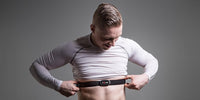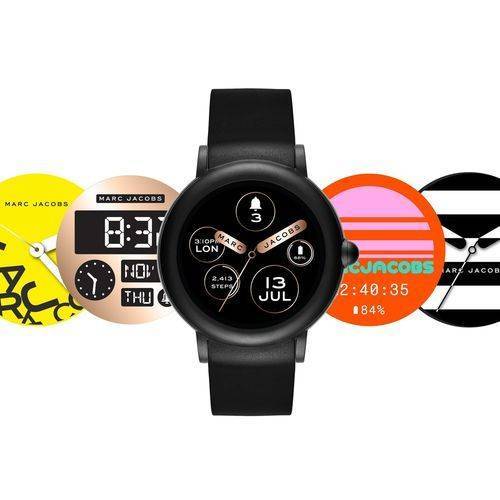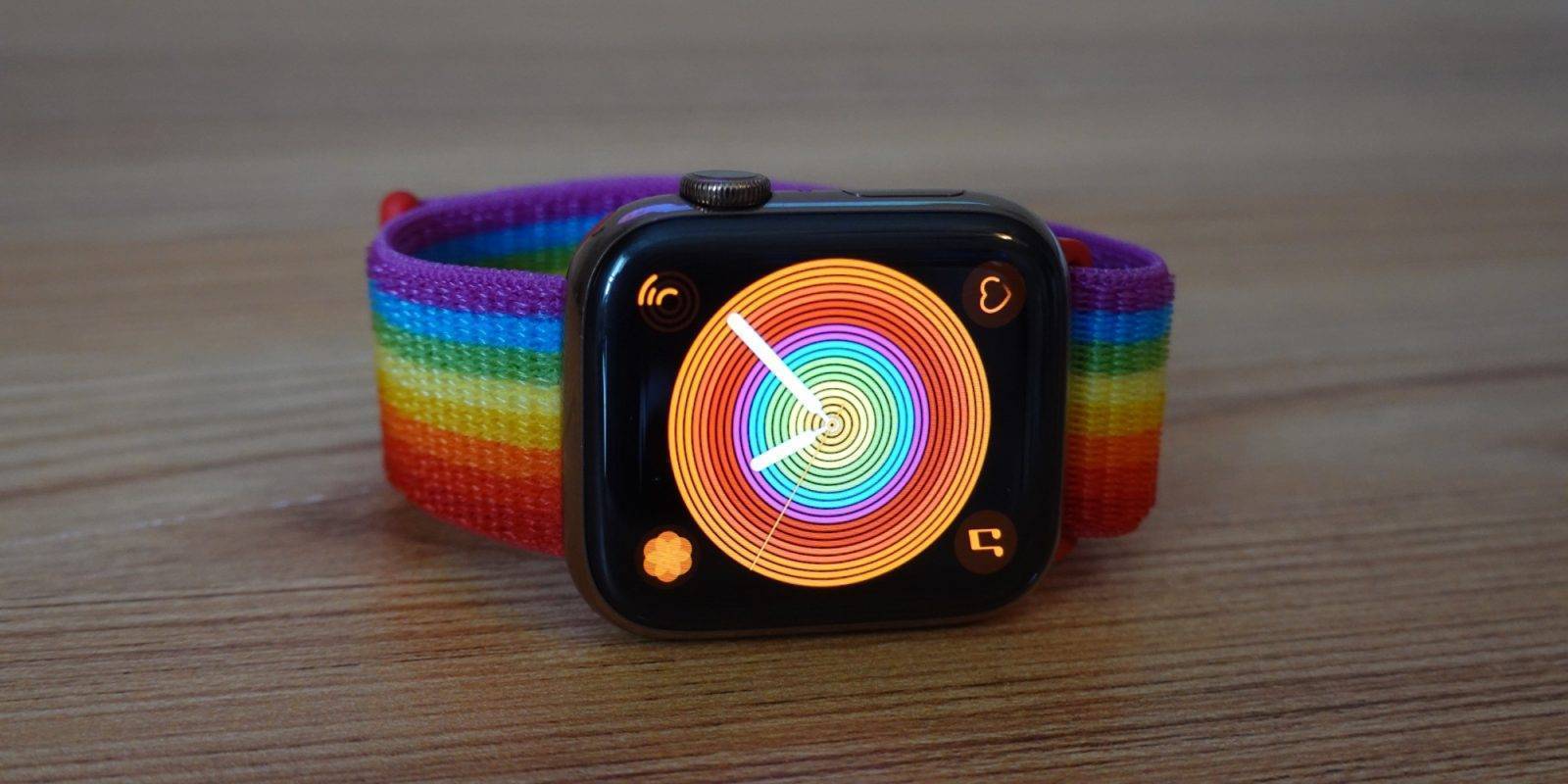

Best heart rate monitor -- 2020 Watches and chest straps
, by Madhu, 18 min reading time
Whether you are an athlete or a beginner, using a good heart rate monitor is essential to gather data from your workouts. A lot of information can be fetched from heart rate analysis. Heart rate monitors are not only for sports. They can monitor your heart rate all day and notify you if you are ill or of your stress level or tiredness. It can even advise you to take a break. Based on our tests of heart rate monitors available in the market, we have reviewed the top picks to help you choose what is best for you.
Tips to pick the right heart rate monitor
For the majority, a heart rate monitor boils down to the type of device they use for their workouts. There are two types of heart rate monitors -- chest straps and optical wrist sensors. Most of the chest straps use ANT+, compatible with running watches that use the same connectivity. Those who use their phones for workout will need a Bluetooth-enabled strap that will connect to apps like Runkeeper and Endomondo. But Strava has recently cancelled the support for external Bluetooth devices within its app.
Chest strap versus optical wrist sensors
As mentioned above, there are two types of heart rate monitors: chest straps and wrist devices. The wrist devices use LEDs to measure blood running through your veins. Most of the running watches, smartwatches, and fitness trackers from Garmin, Fitbit, Suunto and Apple have built-in optical sensors. But how accurate is an optical heart rate monitor compared to chest straps?The optical wrist wearable is a convenient and comfortable device. They give satisfactory values while tested on steady runs. However, while doing functional fitness or HIIT, the optical sensors could not keep up with the rapid rise and fall in bpm. The optical sensors can be perplexed by the movement of the wrist during exercises.Controversially, it gives inaccurate data for dark skin. So the accuracy in reading varies from person to person. This is where the chest strap wins even though it is uncomfortable to wear.
The accuracy
The imperfect data from the wrist devices can be pardoned for the convenience they offer. They are good and consistent enough. The insights on recovery and performance derived from the sensors are quite convincing. Garmin and Polar do a good job as far as the training in HR zones are concerned. But if you are a functional fitness and HIIT person, the chest strap will be a better option for more accurate data.
Other heart rate sensors
There is a new type of optical heart rate sensor that can track from the forearm and the upper arm. Polar, Whoop and Scosche have heart rate monitoring armbands that claim to have the same accuracy level as a chest strap.In general, the movement of the forearm and upper arm is lesser than the wrist during workouts. The skin tone remains an issue still. Another type of heart rate monitor is in the form of headphones as the ear can reportedly deliver more reliable data.
Polar H10
If it is accuracy that you are looking for, then chest straps give the best results; and among them, the Polar H10 is the most reliable device. Polar H10 is iOS and Android compatible. It has both Bluetooth and ANT+ connectivity, which enable you to pair it with various devices and third-party apps. It can be connected to Garmin sports watches. A modified design has been introduced to keep the strap in place.Polar H10 is also a comfortable device to wear. The device uses an ECG type sensor that detects the electrical activity of the heart to learn the BPM reading. A new measuring algorithm and additional electrodes to prevent interference gives improved accuracy compared to regular ECG sensors. This chest strap is waterproof, letting you swim with the device on you. But it will not track heart rate intervals underwater.The devices memory can store a training session in case your phone or wearable gets switched off. We have tested the Polar H10 against various fitness trackers and smartwatches by loading data on to the Polar Beat app -- built for heart rate-based training -- and we always got the best results from the chest strap. This is the cheapest available chest strap, and it delivers good and accurate results.
Whoop Strap 3.0
With a 2,000 INR monthly subscription, the Whoop Strap 3.0 has something different to offer. While it is a wristband, it can be also used on the forearm and upper arm, which will help you get more reliable readings during your training sessions. The device has no display but it can detect exercises automatically and can be read through the app.All the data on heart rate from your sessions can be synced to the Whoop app. Whoop has more to offer than just tracking the workout sessions. It also analyses the effects of a workout using Strain Score. This is done by measuring the gap between heartbeats to see your strain level. It will compare this with the rest of your regular activities and your sleep and will tell you when you need to rest or push yourself to be more active.For those who are serious about their training, this data is important. Even though Garmin gives you similar information, it is limited to running. So if you are into weightlifting, CrossFit and other types of sports, the Whoop Strap 3.0 is highly recommended.
MyZone MZ-3
MyZone MZ-3 lets you earn points based on your bpm(beats per minute) in addition to the basic bpm recordings. It is also being integrated into many fitness classes at studios and gyms globally. This chest strap does not simply give scores based on a high reading but it analyses your effort over time and creates a data set for your level of exertion.To motivate you to perform the best, MyZone enables you to compete with others and, like in golf, even with those with vastly different abilities. It is a conventional red elastic chest strap which comes in three sizes and can be clipped on to your chest. The device has an internal memory to store about 16 hours of data, which lets you workout without having to carry your smartphone.MyZone MZ-3 offers a battery life of seven months from a single charge. It is waterproof up to 10m underwater, which lets you use it for swimming as well.With smartphones around, you have access to live stats along with league tables, personal goals, and challenges that will keep motivating you. In gyms that support MyZone, the data will appear on a big screen during your sessions. Over the years, the app has improved by adding new features that have put the heart rate monitor to better use.
Wahoo Tickr X
Wahoo Tickr X, launched in 2015, remains a chest strap in demand for heart rate monitoring because of its affordability and the features it has managed to pack in -- especially if you are into spinning. It is a standard chest strap with an embedded watch-type battery that will last for over a year.Wahoo Tickr X is comfortable to wear, easy to clean, and easy to clip on. Although it works better with Wahoos Fitness app, this chest strap works with a multitude of devices as well; so it is perfect for those who work out with a smartphone.It has dedicated modes for spinning and other activities. The inbuilt accelerometers derive extra stats for running and it can be combined with other sensors to add cadence and RPM data for indoor cycling. These features give Tickr X an edge compared to most simple straps. Wahoo Tickr X has an internal memory of 16 hours to store your heart rate data and motion analytics to track your cycles too.This helps you workout without your phone and transfer all the data later. It fetches real-time heart rate data that you can view in the paired app.It will also train you within heart rate zones and you can set burn and burst heart rate levels which are calculated by the device. The data is accurate, the graphs and feedback are well presented. On the whole, this is a fine chest strap, particularly for a spin bike. But even if you are not an indoor cyclist and are looking for heart rate data, Wahoo Tickr X is the best bet as far as chest strap is considered.
Scosche Rhythm24 HR
Scosche launched the first armband heart monitor much before Wahoo and Polar launched their armbands. So Scosche Rhythm24 HR is an option if you do not like to wear a chest strap and do not trust the accuracy of a wrist-based heart rate monitor. Rhythm24 can be fixed to your forearm to track your BPMs just like its predecessor.The idea of a forearm band is that the movement of the forearm is comparatively less than the wrist and so the reading will be more accurate. The bands are available in different colours.Rhythm24 is waterproof and it stores workout data in the device and sync it later. There are LED lights to indicate the heart rate zone during your training. It also indicates when you need to charge it. Rhythm24 has ANT+ and Bluetooth Smart connectivity. This means it can be used with many third-party fitness apps, sports watches and sports equipment.There is an app from Scosche which has dedicated profiles for a range of activities. It does a neat job, is simple and easy to use and keeps you focused on the heart rate data.This wearable passed the high-intensity interval test when we tested it. The device is comfortable to wear during workouts. It can measure the heart rate even underwater. But the reliability of data is yet to be tested. To conclude, Scosche is a heart rate monitor that is comfortable to wear elsewhere in the body and still get the results you look for.
Garmin Forerunner 45
Garmin Forerunner 45 is the companys entry-level running watch and it has a built-in optical heart rate monitor. It uses Garmins Elevate technology which is the same technology found on the new Garmin Fenix 6.Even though it does not produce heart rate data that is as accurate as the top models of Garmin, it gives a VO2 Max reading after your outdoor run. This is tracked in the Garmin Connect app. Forerunner 45 suffers the same dropouts and inaccuracies like the rest of the Garmin range.This device is best for steady runners. For the price at which it is available, it can be called a solid performer.
Polar Vantage V
Polars heritage is built on heart rate monitors. The company has made good progress in improving the accuracy in readings from the wrist. The company has brought some of the best in the business like Vantage V, Vantage M and Ignite multisport watches. Polar uses an optical sensor as well as an LED sensor that penetrates through the skin to fetch more accurate and reliable data.It has many LEDs and electrode sensors to make sure that there is proper contact with the skin. This heart rate monitor is used for many features on the new Vantage watches. With the real-time heart rate data during your exercise, you also get VO2 running estimates, data on calories burned (which is based on maximum heart rate) and advanced metrics like cardio load and muscle load for those who are serious about training.Vantage V measures the heart rate throughout the day and points out when the heart rate is high or low. This will help to calculate the calorie burn accurately. The monitor is a solid performer for activities like running and interval training where many of the optical sensors face problems.This is similar to Vantage M, which has the same sensor technology inside an affordable watch. Polar claims that its H10 chest strap is the best device for heart rate tracking for serious athletes. On the whole, this watch is very impressive as far as heart rate metrics are concerned.
Garmin Forerunner 945
Forerunner 945 is one of the top sports watches of Garmin and is designed mainly for triathletes. With Garmins latest technology, Elevate optical HR that is included in Forerunner 945, the device is reliable for runs. This is not a great device for HIIT sessions though. But pairing it with a chest strap can give you more accurate data.Forerunner 945 allows you to train in heart rate zones, receive heart rate alerts, and broadcast heart rate data over ANT+ with paired devices. It can be used for swimming if it is paired with Garmins HRM-Tri or HRM-Swim bands to get the right data underwater.Forerunner 945 derives many useful metrics from the heart rate data like Training Effect, Training Load, recovery and VO2 Max. All these metrics are figured from your tracked runs using Firstbeat technologys heart rate variability algorithms. The data produced can further help you learn about your sessions. Heart Rate Variability stress tests can be performed outside your workouts to know how well your body has recovered before you go on to your next workout session.Another heart rate-based metrics in Forerunner 945 is lactate threshold that can be unlocked when it is paired with Garmins Running Dynamics Pod. Comparison of results with the Polar H10 chest strap proved that Forerunner 945 fared well. This is definitely an improvement from Garmins previous models.
Garmin HRM Tri
There are many wrist-worn sports watches that claim to offer accurate heart rate monitoring underwater. Polar Vantage V, Polar Vantage M, Scosche Rhythm24 and the new Polar OH1+(which can be worn on your goggles) promises reliable metrics on par with a chest strap.Devices like Instabeat lets you view real-time heart rate through your goggles. The Garmin HRM Tri strap is a professional device for triathletes. It is small and lightweight -- weighing around 49g. This heart rate strap tracks biking and running data as well as some of the pool functions with HRM Swim.It has a built-in accelerometer that will deliver cadence, vertical oscillation and contact time with the ground (like Garmins HRM Run). It also has HR stat storage while underwater. All the edges are soft and rounded to avoid rubbing or any wetsuit-doffing difficulties.
Apple Watch Series 5
Apple Watch Series 5 is not just a smartwatch but also a sports watch with a solid heart rate monitor and with many features it has that are of medical-grade. Analysing from the fitness point of view, Series 5 is highly impressive even in areas where many of the wrist-based monitors have failed. For example, Apple Watch Series 5 proved to be good in HIIT sessions.The data can be viewed in Apples Workout app as well as in third-party apps such as Strava and Runkeeper. Series 5 is equipped to read reliable resting heart rate readings throughout the day, in case you are not much into working in heart rate zones. It has an additional feature of ECG to detect any serious heart conditions including atrial fibrillation.The ECG and other conditions of the heart can be read from Apples Health app which can be converted to a PDF file that can be shared with your doctor. With the improved hardware, Apple has also worked on its software to improve the performance of its heart rate monitor. Even though Fitbit and Samsung offer a decent heart rate monitor, Apple Watch Series 5 does a better job.
Fitbit Charge 3
The Fitbit Charge 3 packs the same heart rate monitoring set up as Charge 2. So we expect the same performance. Like all wrist-based monitors, Charge 3 is not efficient at HIIT sessions. But it is a good device for workouts in the gym and on the road if you are willing to compromise a bit on accuracy.Charge 3 works with Fitbit's PurePulse technology for features like real-time heart rate readings during your workout and to train in heart rate zones. Just like Apple Watch, it is not about using heart rate for exercise. It constantly monitors your heart rate to assess your state of fitness.Charge 3 also uses the sensor to track your stress levels from guided breathing exercises. It also acts as a sleep monitor and produces metrics to analyse the quality of your sleep. The tests on Charge 3 gave mixed results. Its sensor was lagging behind that of the chest strap that was used for comparison. But post-workout, Charge 3 analysed the data better in the app.As far as continuous heart rate monitoring is concerned, the real-time data proved to be more reliable. Fitbits app is one of the easily accessible ways to track your workouts and HR data. Even though it is not a perfect tracker by any means, it is more reliable than many fitness trackers that were tested. If you are looking for a heart rate monitor which is slimmer and cheaper, take a look at the Fitbit Inspire HR.
Garmin Vivosmart 4
One of the best fitness trackers, Vivosmart 4, has a slimline design and it gives more insightful data with the built-in heart rate monitor. Vivosmart 4 can be used to measure the intensity of your workout but you will have to depend on the motion sensors to track the activities as there is no GPS support.VO2 Max measurements are supported and so the maximum amount of oxygen your body can use during your exercise can be measured. You may have to do a few workouts to get this calibrated. Vivosmart 4 can offer continuous heart rate monitoring during the day to fetch the resting heart rate readings which can be used to derive insights on your current level of health and fitness.It also takes heart rate variability measurements to analyse stress levels and has put Garmins new Body Battery feature to good use. This feature gives insight into the recovery of your body and tells you if you are ready for your next workout session.This is done by taking your stress level, recent physical activity and your sleep metrics into account. Vivosmart 4 is not a tracker designed for professional athletes and that is pretty evident from the performance of the heart rate sensor.But this is a good device to monitor the fitness levels of a casual user -- just that it will let you down when things get more intense. For the slender tracker, it is, Vivosmart 4 has an action-packed heart rate monitor. If you are looking for a more feature-packed device, you can go for Vivosport instead.
Withings Steel HR Sport
The Withings has bought the company back from Nokia that they had sold two years ago. The hybrid, Steel HR Sport by Withings works similar to how Nokia Steel HR worked as far as the performance of the heart rate monitor is concerned. The Withings HR Sport is the successor of Steel HR and gives you a reliable heart rate monitor within a stylish analogue watch.At the top of the watch face, you can view real-time heart rate data during your workout. The VO2 measurement support available in the watch will assess your fitness level. The heart rate zone cannot be adjusted which makes it a bad choice for the HIIT class. Overall experience was good with Steel HR Sport.It even held up during interval training where most of the optical sensors failed to catch up with the rapid change in heart rate. Live readouts were lagging behind the Polar H10 chest strap while testing. But post-workout, the data seemed to correct itself in the graphs. So the final results of both the devices were quite close.You will be able to view your heart rate data in the Health Mate app if your phone is close by during your workout. It keeps everything simple when you are done with your session and all you need to do is pore over the data. There are plenty of advanced heart rate-based metrics available, but in terms of a hybrid that can handle sweaty tests in the gym or outdoor run, the Steel HR Sport does a great job.Blog posts
-

The oomph factor: Marc Jacobs Riley is here
-

All for the Pride: Apple will release Pride Edition.
-

Motiv Ring along with Alexa will assist to find your lost phone



